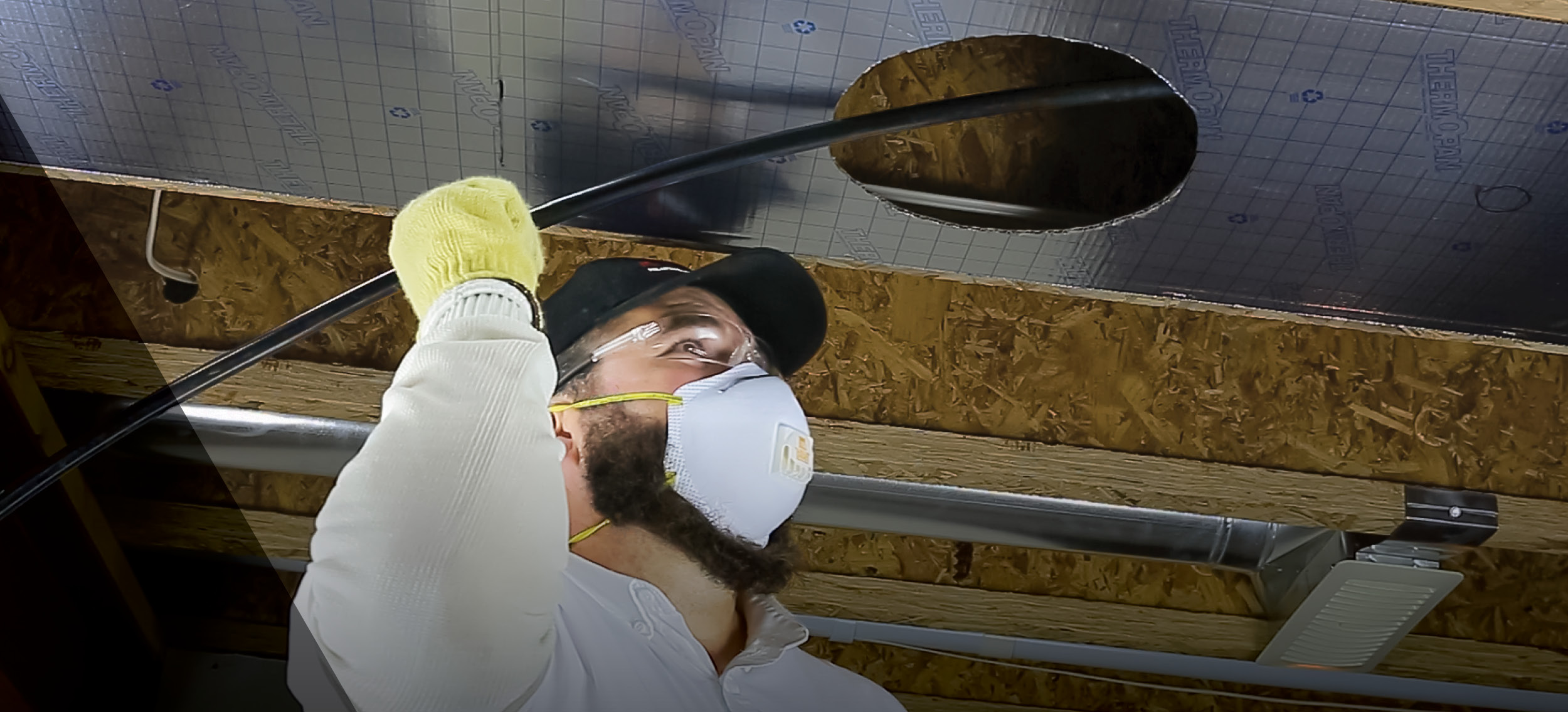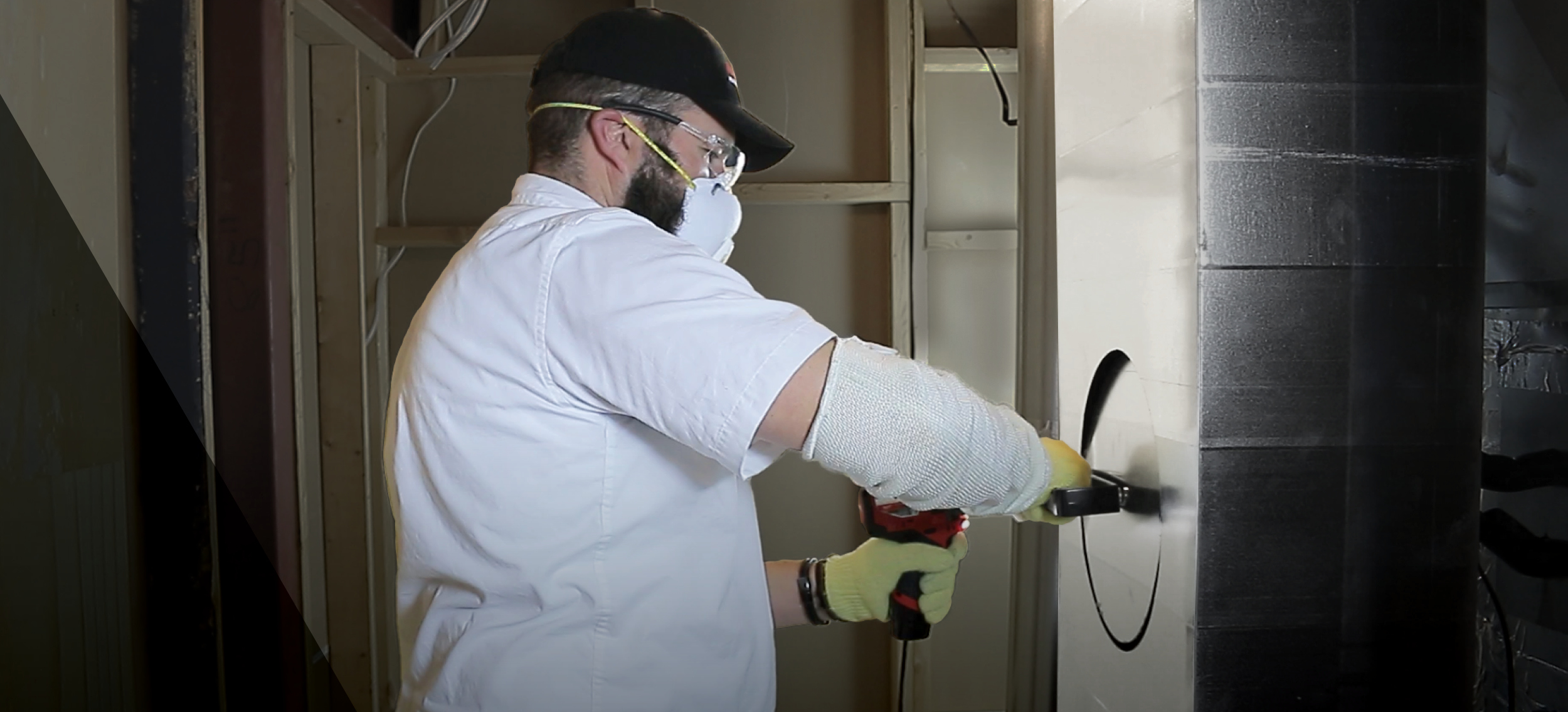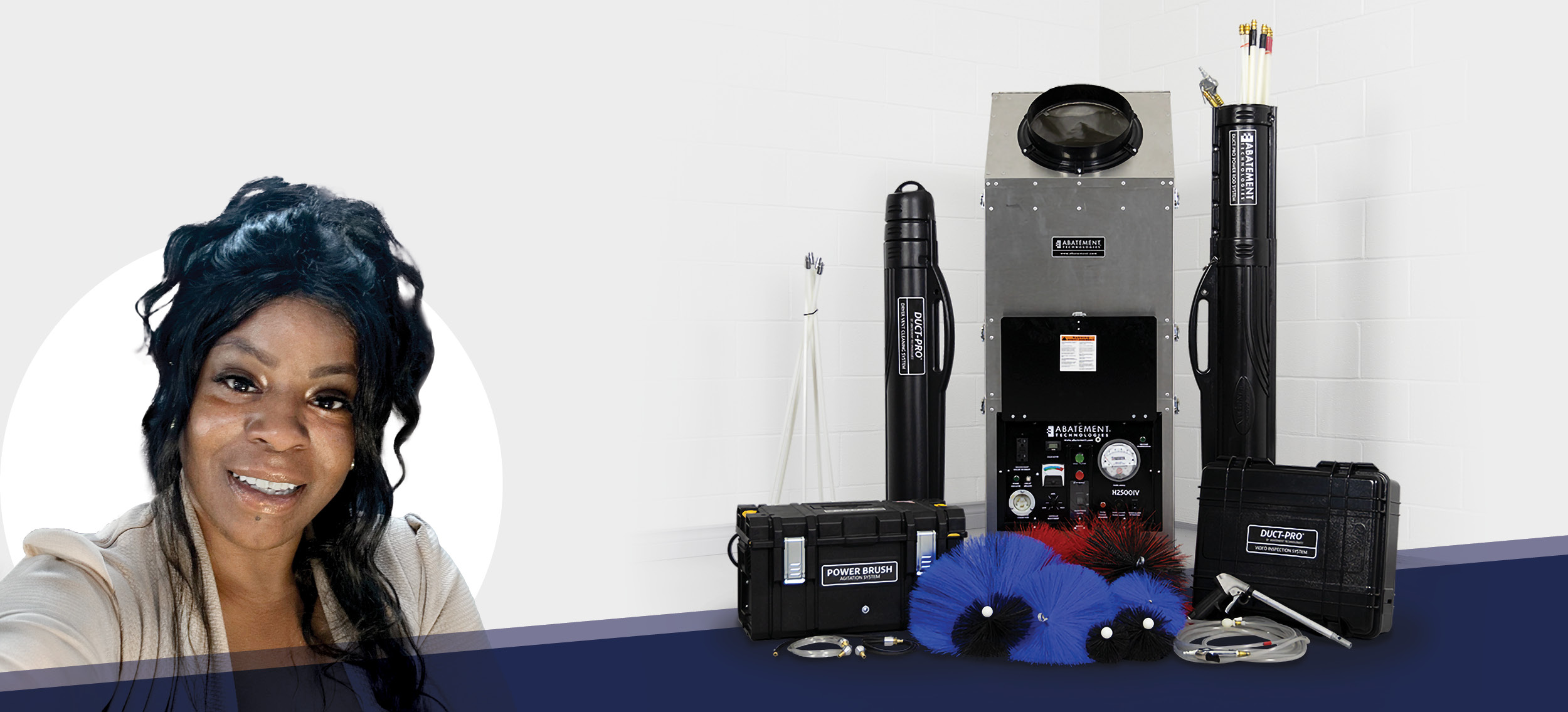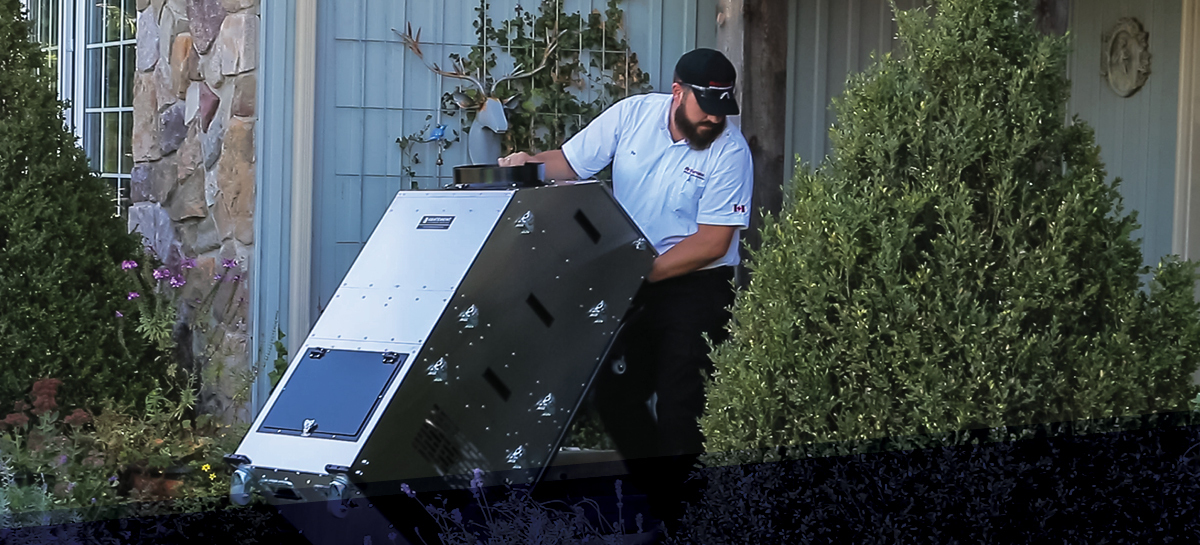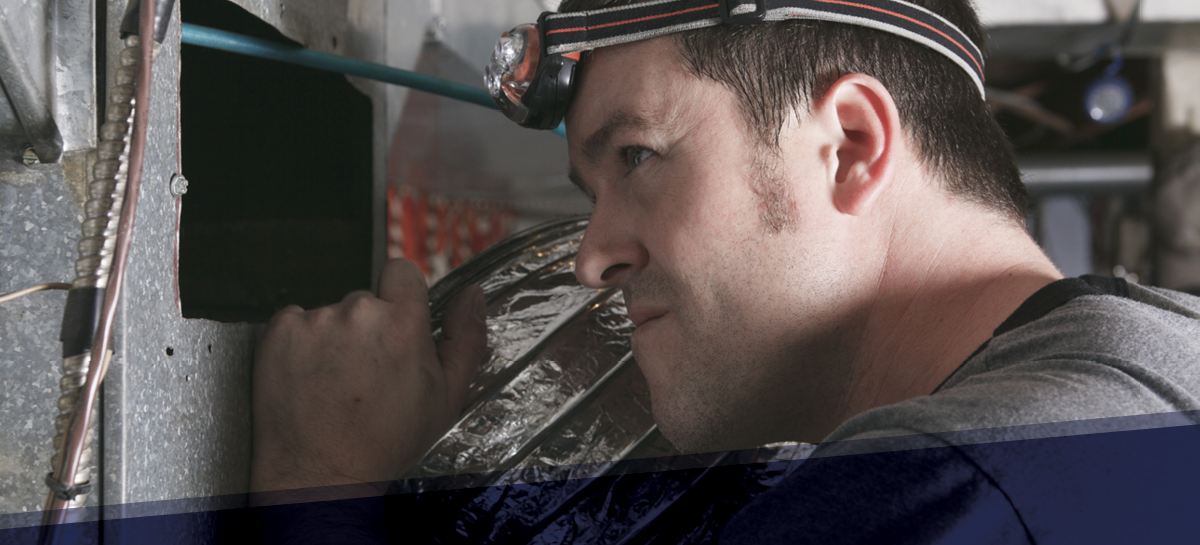Abatement Technologies® is the industry leader in quality duct cleaning equipment. Our DUCT-PRO® source removal duct cleaning process provides contractors with the tools needed to follow the NADCA recommended steps for cleaning air duct systems effectively. With DUCT-PRO, contractors can benefit from a faster and more efficient cleaning process and customizable duct cleaning packages, and Abatement Technologies® can help contractors select a package that is suited to their needs.
It’s important to understand the role each piece of equipment plays in the duct cleaning process to ensure their efficiency and proper use. In previous blogs, we’ve explained the necessary equipment and prep work and the process for cleaning the HVAC supply. In this blog, we’ll explain the methods for duct cleaning, beginning with the “push” method.
Conducting the “Push” Method
Once the grills have been covered in the preparation stages, duct cleaning professionals can begin the “push” step of the process using specialized air tools and nozzles operated by the DUCT-PRO® AIRE-SWEEP® portable air compressor. The duct cleaning professional should give the furthest grill an initial air wash using a light blast from an air booster gun, then clean the entire grill completely. In this step, many duct cleaners will also wash and sanitize the grills.
The branch duct will then be cleaned using a forward air sweep. This step uses a nozzle that has holes pointing in a forward direction, which pushes the debris forward toward the main duct and to the power vacuum. Forward air sweeping should be done until the branch is clean. Another common method of branch cleaning is the reverse air sweep method, which is usually done if the ductwork is in the basement and affords easy access.
Once each branch is clean, the grills should be replaced and the main duct can be cleaned. This process typically involves the use of the reverse air sweep. However, in an attic or crawl space, the forward air sweep is used.
Cleaners will often need to air sweep each section of the ductwork several times before they’re considered clean. The cleaners will know the section is clean when they no longer hear or see debris being pulled through the clear power vacuum hose.
In the event of extreme debris, agitation may be required to dislodge the buildup prior to air sweeping. We’ll explain the proper tools and systems for agitation in our next blog.
Want to learn more about our DUCT-PRO® equipment and packages? Click here - https://abatement.com/usa-duct-cleaning-process/

